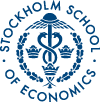No 2020:2: The Internationalization of the Scandinavian Newspaper Industry 1990-2010
Erik Lakomaa () and Richard Wahlund ()
Additional contact information
Erik Lakomaa: Stockholm School of Economics, Postal: Stockholm School of Economics, P.O. Box 6501, SE-113 83 Stockholm, Sweden
Richard Wahlund: Stockholm School of Economics, Postal: Stockholm School of Economics, P.O. Box 6501, SE-113 83 Stockholm, Sweden
Abstract: During the 1990s, three of the major Scandinavian media groups entered new markets, two of them – Swedish Bonnier Group through Dagens Industri - and the Stenbeck Group through Metro came to use new internationalization models (and business models) which later became widely copied by other media companies. At the same time, Norwegian Schibsted chose to enter new markets through a traditional acquisition model. However, despite initial successes, both Dagens Industri and Metro withdrew from the new markets, in many cases following major losses. Schibsted came out better. Using case studies based on archival and oral history sources from the three media groups I study the internationalization processes, and through synchronous and diachronic comparative analysis, examine why the different media companies chose the strategies they chose, what were the success factors and why the new internationalization strategies, despite initial successes, failed to produce the intended long-term results for the two companies that used them. There are many cases where media companies have entered new markets. However, these available Scandinavian company cases are rather unique in that the accounted for a significant portion of the media market in their home markets, shared the same (or similar) institutional environment, internationalized close in time, had access to the same (newly opened Eastern European) markets. The combination of conditions makes it possible to make a substantial and general contribution to research on an important but difficult study, as well as to the theory of internationalization. Since the home markets of the aforementioned companies were small language areas and they could therefore not internationalize by (like newspapers like the Financial Times or International Herald Tribune) distributing existing products across borders. Instead, two of the companies studied internationalized by taking the) very unusual step to publish more or less adapted editions of an existing newspaper, but in a language other than the original publication. This makes Metro’s and Dagens Industri's internationalization strategies interesting in themselves. We have found that local entrepreneurs, particularly the self-organization among these entrepreneurs, played an important role when the newspaper companies entered new markets. It is also found that business models in the newspaper industry that focus on the search for local knowledge are driving the success of market entry. Further, we also found that the organization of the media group, the degree of autonomy among the foreign ventures, the differences in corporate culture – and previous experiences of internationalization – shaped the choices of entry modes and the outcome of the ventures
Keywords: Internationalization; Newspapers; Scandinavia; Entry mode
42 pages, December 31, 2020
Questions (including download problems) about the papers in this series should be directed to Erik Lakomaa ()
Report other problems with accessing this service to Sune Karlsson ().
This page generated on 2024-02-05 17:11:24.

